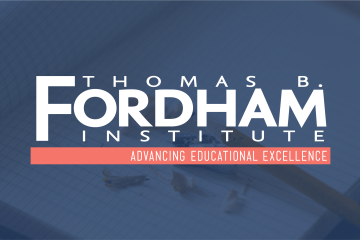Via the state budget process, House lawmakers this week proposed putting the brakes on the Cupp-Patterson plan, the state’s school funding formula. Facing an out-of-reach price tag and questions from House leadership on its sustainability, the chamber rebuffed calls by school groups to update the formula “inputs”, which have ballooned in recent years thanks to the Biden-era inflation burst. Instead, it proposed a “bridge” plan that gives every district and charter school what they receive this year in state aid—through a big old guarantee—plus a bit more.
Leaving behind Cupp-Patterson is a sensible move, given its structural problems and unsustainable costs. But the House didn’t get everything right. Disappointingly, its plan undermines a commendable push by Governor DeWine to slim down funding for districts with declining enrollments. The lower chamber also missed an opportunity to fix a glaring problem in the funding system—the method that the state uses to fund low-income students. Overall, while the House took a step towards fiscal sanity, lawmakers still have work ahead to ensure its proposal serves as a suitable bridge toward a better funding system for Ohio schools and students.
The big picture
Table 1 shows funding projections under the House plan. Traditional districts receive a boost of $179 million from current year funding through FY27—a 2.2 percent increase—while charter support rises by $80 million, or 6.3 percent.[1] Joint vocational school district (JVSD) funding increases $38 million or 7.6 percent over the biennium. In total, public schools on average receive a 3 percent increase in state foundation funding.
Table 1: Foundation funding increases under the House funding plan

Compared to the DeWine school funding proposal, the House plan calls for a bigger overall increase ($297 versus $149 million from FY25 to FY27). But as the table above indicates, they did shift some money around. Their budget dials back the gains that charters and JVSDs—sectors with growing enrollments—would have received under the governor’s proposal and instead puts more dollars into a traditional district sector. The mechanics are complex,[2] but the House essentially caps the funding increases that some districts and nearly all charters receive under the DeWine plan and uses those “savings” to help pay for a guarantee that insulates districts from reductions otherwise prescribed under the formula. In other words, there was some robbing of Peter to pay Paul to ensure that all districts come out as “winners.”
Looking forward
Where does this leave us? Three thoughts.
First, with the governor and House showing little enthusiasm for Cupp-Patterson, it feels more and more like its days are numbered. The plan’s Achilles’ heel has always been its price tag and the question of how lawmakers would cover its costs during a budget crunch or a spate of high inflation, as the country recently experienced. Now with formula prescriptions spiraling out of control, Ohio seems to be heading back to a system in which schools are funded—at least in the near-term—via a patchwork of caps and guarantees.
Second, rather than reinforcing the governor’s push to stop funding “empty desks,” the House took the politically easier route of propping up districts that are shedding enrollment. As Table 2 shows, even districts losing significant enrollments receive funding bumps under the House plan. For instance, East Cleveland receives an uptick (albeit small), despite its freefall in enrollment. Statewide, districts lost 2.5 percent of enrollment over the past three years, yet the House gives them a funding increase of 2.2 percent. As the budget heads to the Senate, the upper chamber should consider removing some dollars from districts losing students and redirecting them to schools more in need of state aid, including charters whose enrollments are on the up.
Table 2: Funding estimates for districts with the largest enrollment losses from FY222 to FY25

Third, despite being well-informed of the problem and offered a solution, the House did not address a critically flawed element of the funding system: disadvantaged pupil impact aid (DPIA). As discussed on this blog many times before, the way Ohio currently funds low-income students is a mess. Due to artificially inflated “economically disadvantaged” rates—resulting from changes in federal school meals policy—the state no longer effectively targets DPIA to high-poverty schools. This misallocates state dollars and draws resources away from students who most need the supplemental aid.
The fix is direct certification, a process that more accurately identifies low-income students (and is already used by the state). Using these numbers to drive DPIA to schools (instead of meals-based disadvantaged rates) would significantly improve the allocation of funds. And in the context of this year’s budget, such a change would help correct an imbalance in the increases of low- and high-poverty districts. Under the House plan, wealthy suburban districts receive bigger increases than the high-poverty Ohio Eight urban districts (4.9 to 1.3 percent). The reason isn’t necessarily favoritism—suburban districts tend to have growing enrollments—but the discrepancy is still concerning. Shifting DPIA to direct certification—something the Senate should do—would boost funding for the Ohio Eight districts, and move their increases closer to parity with their suburban counterparts.
Figure 1: Change in funding under the House plan, FY25–27

* * *
House lawmakers were clearly trying to navigate complicated political and budgetary concerns. In the end, they landed somewhere in the middle on school funding. On the one hand, they took the fiscally prudent step of clipping the wings of Cupp-Patterson. On the other, they failed to make urgently needed structural changes to the way Ohio funds education. As lawmakers finalize the budget, they should keep their sights on this basic principle: Education dollars fund students, not the needs of systems.
[1] Within the charter sector, e-schools receive bigger increases than brick-and-mortars (10.0 versus 5.1 percent), likely reflecting the House’s extension of DPIA funding to e-schools.
[2] The DeWine plan continues using Cupp-Patterson (fully phased in), but does not include an input update. The House plan likewise continues to use Cupp-Patterson calculations but puts a cap on prescribed funding increases—schools receive just half the increase above FY25—while also adding a guarantee based on FY25 funding levels that buoys districts that would otherwise lose money under a non-updated formula.




